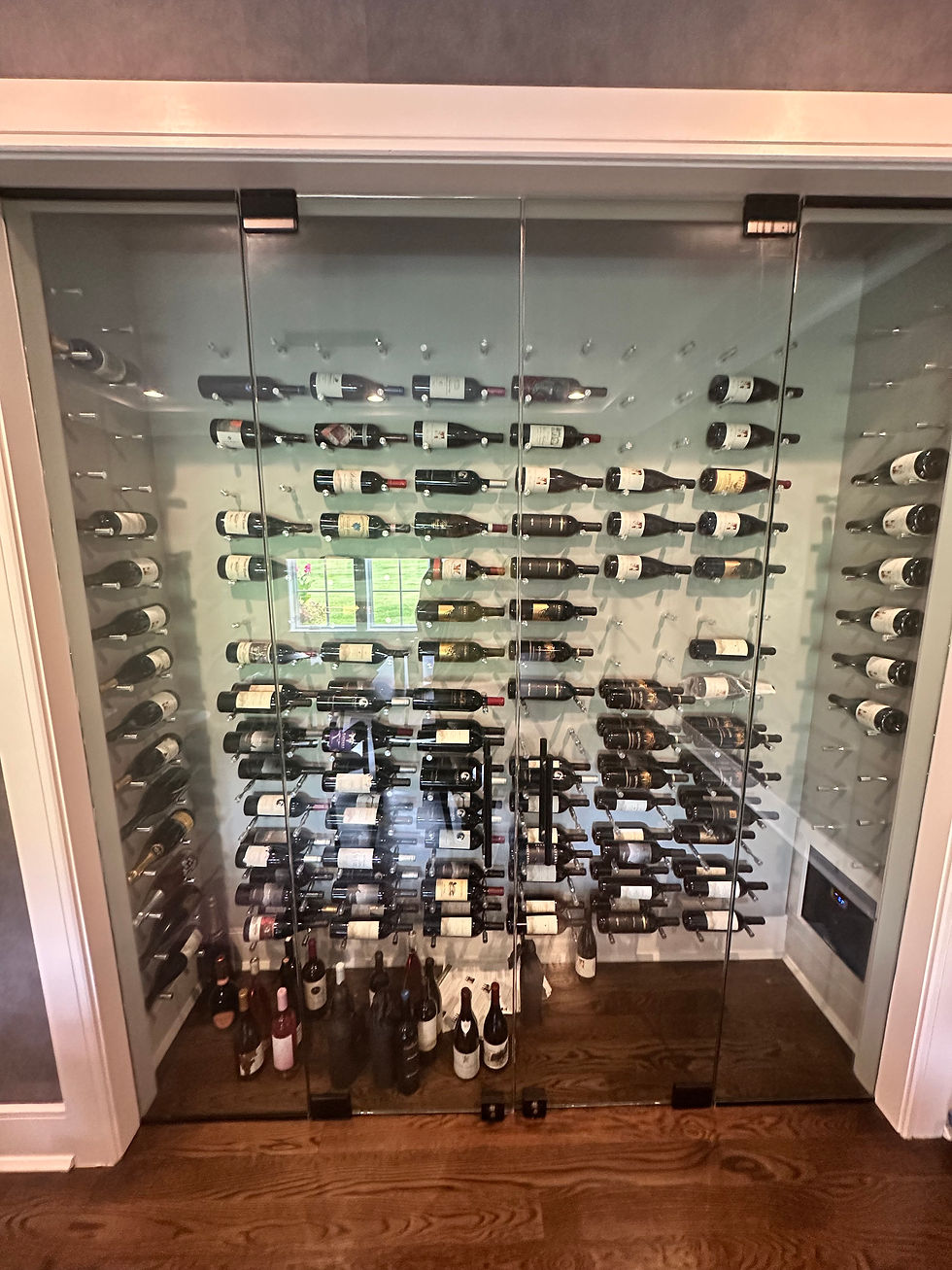WINE CELLAR 101: DESIGN, COOLING, AND CARE FOR A COLLECTION THAT LASTS
- Oleg Tokariev
- Aug 6
- 2 min read
Updated: Aug 14

A wine cellar is more than a storage closet with a lock. Proper climate control, thoughtful layout, and consistent upkeep turn bottles into investments that appreciate in flavor and market value. Below is a practical guide for homeowners in Manhattan, Westchester, Rockland, Greenwich, and surrounding areas who want to build or upgrade a wine room that protects every cork.
Why Climate Control MattersWine ages best at 55 °F and roughly 60 percent relative humidity. Temperatures that climb above 70 °F speed chemical reactions, flattening flavors. Air that is too dry shrinks corks and invites oxidation; air that is too damp breeds mold. A dedicated wine-cellar cooling system-split, ducted, or through-wall, keeps temperature and humidity inside a narrow, protective band year-round.
Key Components of a Modern Wine Cellar
Insulation and Vapor BarrierR-19 insulation in walls and R-30 in ceilings slow heat gain. A continuous vapor barrier blocks outside moisture and prevents condensation behind the drywall.
Cooling Equipment• Through-wall units suit rooms under 500 cubic feet.• Split systems move heat and noise outside the cellar and handle larger volumes.• Ducted systems hide the equipment entirely, preserving clean architectural lines.
Racking and LayoutSelect redwood, mahogany, or metal racks based on capacity goals and budget. Leave at least three inches of clearance behind racking for airflow. Glass doors or display cases look stunning but raise the heat load, so size the cooling equipment accordingly.
Smart Controls and MonitoringWi-Fi thermostats send alerts if temperature or humidity drifts. Many offer data logs that make it easy to verify long-term stability.
LightingLED strips emit minimal heat and UV radiation, protecting both wine and labels. Motion sensors keep lights on only when you are inside.
Typical Questions Homeowners Ask
How big should my cellar be?
Count your current bottles, add projected annual purchases, then add twenty-five percent for future growth.
Will a cellar raise my utility bill?
High-SEER inverter compressors are efficient. A 1,000-bottle cellar typically costs forty to ninety dollars per year in electricity, less than keeping a second refrigerator.
Do I need a permit?
Most municipalities require permits for electrical work and new ducts. A qualified contractor can handle the paperwork.
Is professional maintenance necessary?
Yes. Annual service cleans coils, checks refrigerant pressure, and recalibrates sensors - small steps that prevent major repairs.
Maintenance Checklist
• Vacuum condenser coils twice a year• Clear the condensate drain monthly• Replace door gaskets when they crack or flatten• Keep a temperature log; look for swings greater than two degrees• Schedule a pro inspection every twelve months
Return on Investment
Preserving just a few cases of high-end Bordeaux or Burgundy offsets the cost of a professionally built cellar. Real estate agents note that a well-executed wine room often increases resale value, especially in luxury markets.
Next Steps
Ready to create a cellar that keeps every vintage safe and tasting its best? Elite Systems Experts offers turnkey design, cooling installation, and white-glove maintenance across Manhattan, Westchester, Rockland, Greenwich, Stamford, and beyond. Call or text 347-939-6833 or book online for a free consultation and written quote.




Comments